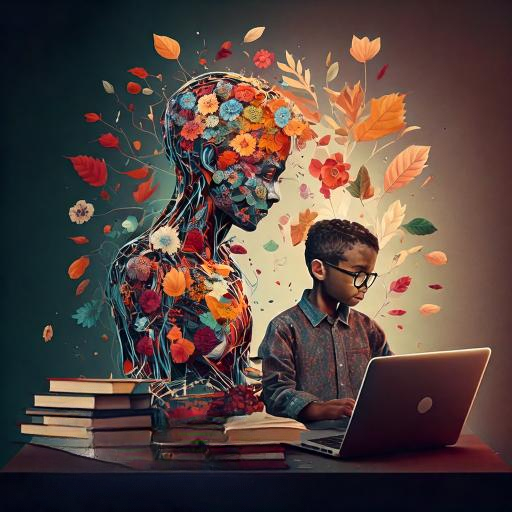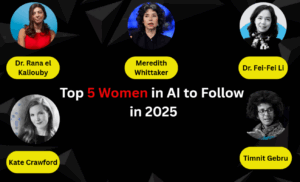In recent years, the landscape of education has undergone a significant transformation, largely driven by advancements in technology. Among these advancements, artificial intelligence (AI) stands out as a powerful force reshaping how educators teach and how students learn. AI-powered classrooms are not just a futuristic concept; they are becoming a reality in many educational settings, fundamentally changing the approach to personalized learning.
Understanding Personalized Learning
Personalized learning refers to tailoring education to meet the individual needs, strengths, and interests of each student. Unlike traditional one-size-fits-all teaching methods, personalized learning acknowledges that students have varying learning paces, styles, and preferences. This approach encourages greater engagement, motivation, and ultimately, better learning outcomes.
AI plays a critical role in this transformation by providing tools and systems that can adapt to each student’s unique needs. Through data analysis and machine learning algorithms, AI can identify learning gaps, predict performance, and suggest resources or interventions tailored to each learner.
The Role of AI in Education
- Data-Driven Insights: AI systems can analyze vast amounts of data from student interactions, assessments, and engagement levels. This analysis helps educators understand which students are struggling, which concepts are difficult, and how to adjust instruction accordingly.
- Adaptive Learning Platforms: Many educational technologies now use AI to create adaptive learning experiences. These platforms adjust the difficulty of tasks based on a student’s performance, ensuring that learners are continually challenged without becoming frustrated. For example, platforms like DreamBox Learning and IXL provide exercises that adapt in real time to a student’s answers.
- Intelligent Tutoring Systems: AI-driven tutoring systems offer personalized assistance outside of the classroom. These systems can provide explanations, hints, and feedback tailored to individual learners, often mimicking one-on-one tutoring experiences. Companies like Carnegie Learning leverage AI to enhance math education, providing targeted support based on student needs.
- Automated Assessments and Feedback: Grading and providing feedback can be time-consuming for educators. AI can automate the grading process for multiple-choice and even some open-ended questions, allowing teachers to focus on providing personalized instruction. Furthermore, AI can offer immediate feedback to students, enabling them to learn from their mistakes in real time.
- Enhanced Engagement through Gamification: AI can also enhance student engagement through gamified learning experiences. By incorporating elements of gaming—such as points, badges, and leaderboards—AI-powered platforms can motivate students and make learning more enjoyable. Tools like Kahoot! and Classcraft use these techniques to foster a competitive yet supportive learning environment.
Benefits of AI-Powered Personalized Learning
The integration of AI in classrooms offers several compelling benefits:
- Improved Learning Outcomes
Research suggests that personalized learning can lead to better academic performance. By catering to individual learning styles and paces, AI enables students to grasp concepts more effectively, resulting in higher retention rates and improved test scores.
- Greater Engagement and Motivation
Personalized learning fosters a sense of ownership over the learning process. When students see that their education is tailored to their needs, they are more likely to be engaged and motivated. AI-powered platforms can adapt content that aligns with students’ interests, making learning more relevant and enjoyable.
- Efficient Use of Resources
AI tools help educators maximize their time and resources. By automating administrative tasks and assessments, teachers can focus on delivering high-quality instruction. Additionally, AI can help identify students who need extra support, allowing educators to allocate resources more efficiently.
- Real-Time Feedback
Instant feedback is crucial for effective learning. AI systems can provide immediate insights into a student’s performance, helping them understand their mistakes and learn from them. This real-time feedback loop is essential for fostering growth and improvement.
- Accessibility and Inclusivity
AI can help create a more inclusive learning environment by offering resources and support tailored to diverse learning needs. For students with disabilities or learning challenges, AI tools can provide alternative ways to engage with material, ensuring that all learners have equal opportunities to succeed.
Challenges and Considerations
While the benefits of AI in personalized learning are significant, there are also challenges to consider:
- Data Privacy and Security
The use of AI in education often involves the collection of vast amounts of data. Ensuring the privacy and security of this data is paramount. Educational institutions must be vigilant in protecting student information and complying with regulations.
- Equity of Access
Not all students have equal access to technology, which can create disparities in learning opportunities. Schools and policymakers must work to bridge this digital divide to ensure that all students can benefit from AI-powered learning.
- Teacher Training
For AI tools to be effective, educators need training and support in using these technologies. Professional development programs should be implemented to help teachers understand how to integrate AI into their classrooms effectively.
- Over-Reliance on Technology
While AI can enhance learning, there is a risk of over-reliance on technology. Educators must strike a balance between leveraging AI tools and maintaining traditional teaching methods that foster critical thinking, creativity, and social interaction.
The Future of AI-Powered Classrooms
As technology continues to evolve, the potential for AI in education will only grow. Future developments may include more sophisticated AI systems capable of understanding and adapting to emotional cues, further personalizing the learning experience. The integration of virtual and augmented reality with AI could also create immersive learning environments that enhance engagement and understanding.
In conclusion
AI-powered classrooms represent a significant shift towards personalized learning, offering tailored educational experiences that cater to the diverse needs of students. While challenges remain, the potential benefits of improved learning outcomes, increased engagement, and efficient resource allocation make AI an essential component of the future of education. As educators and policymakers navigate this transformative landscape, the focus must remain on creating inclusive, equitable learning environments that harness the power of AI for the benefit of all students.
















